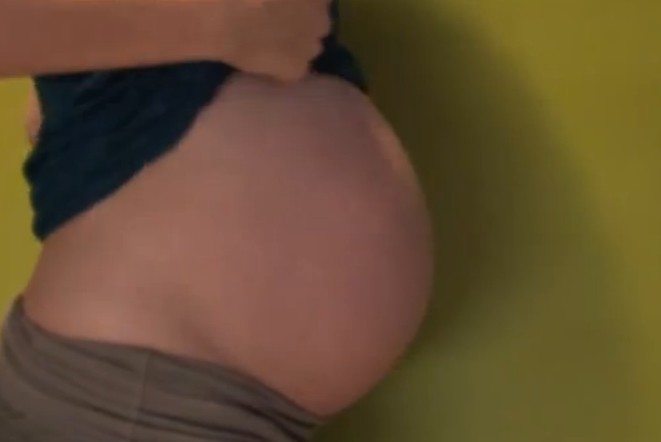The 37th week is the most crucial period as it indicates the approaching due date. The medical world also calls this stage as premature labor or early stage and the baby can be born between 37 weeks to 42 weeks of pregnancy. However the doctors consider the babies full term till the 39th week. It is because the upcoming two weeks gives the right time and conditions for the maturity of the baby’s lungs as well as brain. In case one is having a repeat c-section, the doctor might schedule it to the 39th week unless there is any other reason to perform it earlier. The baby at this stage weighs around 6 1/3 pounds and 19 inches, with many of them having full hair on the head at the time of birth and might also differ in color from that of the parents. There may not be any hair at all except for a hairy patch.
During the 37th week the contractions are more frequently taking place with longer durations and more pain bringing too much discomfort. There could also be an increase in the vaginal discharge and some blood spots that indicate the approaching labor time. All these conditions are also responsible for an uncomfortable sleep at night, followed by some intense dreaming a d anxiety. One must also be careful about feeling the baby’s movements. The body starts getting ready for the labor a month before the due date but there is no fixed way to predict exactly when it starts. The symptoms might keep changing even if the body is unaware of it as the date approaches.
In case one is pregnant with twins one might expect an early labor and a lot of twin pregnancies lead to premature births with an average of 35 weeks. However some women could also go as far as 40th week with their twin pregnancy. A lot of health care experts recommend 37th to 40th week as the best time to stay away from complications. The 37th week is the perfect time for a birth plan to convey to the doctors one’s ideal birth process during the labor to help bring a better mutual understanding.

Signs of labor in the 37th week of pregnancy
- In the case of a first baby, one also goes through the feeling of the baby being dropped, also called ‘lightening’. A few weeks prior to the due date of the labor, this feeling starts since the baby moves downwards to the pelvis. The pelvis might also feel heavy with some pressure below the ribcage.
- The Braxton Hicks contractions in which the cervix ripens and is the ultimate symptom of approaching labor in fact the true labor. A lot of women could feel menstrual cramps during this time.
- The mucus plug also gets passed during this stage. It is a small amount of thick mucus which acts as a blockage to the cervical canal leading to the uterus. The mucus plug might come as an increased discharge from the vagina for several days or as a lump all at once. The mucus can also have traces of blood that could be red, brown or pink.
- The water breaks as well. Some women might not have regular contractions, but most of them have some time prior to the breaking of water. In some cases the water could break first. And after this the labor is likely to happen soon. In case the contractions don’t happen naturally, one may go through induced labor.
- Sometimes it gets difficult to determine if the labor is true or false. But false labor comes at different and unpredictable intervals varying in time, and density of pain whereas true labor come at shorter and regular breaks with more stability in length and intensity even after being irregular initially. The pain in true labor begins with the lower back to the abdomen whereas in a false labor the pain is around the lower abdomen or specifically on the lower abdomen. Also, false labor might take place while changing positions or stop on its own whereas true labor will continue irrespective of the activities.
- One can also feel the uterus tightening that begins with a mild sensation but eventually becomes painful.